Span 28 cm / 11 in
Weight 43 g / 1.52 oz
Concept:
Regularly going through various defense reports one certain design caught my attention, that of the Russian kamikaze drone Zala-Lancet.
To transform this seemingly well thought out craft with its sleek fuselage and eight wings into a simple glider or rubber powered model would be a pleasant challenge so I thought before I started experimenting.
Since I had no earlier experience with models of the eight-wing type I cut half a dozen simple sheet balsa fuselages and an uncountable number of wings. — Why so many? – Well, I had no idea what angle of attack (AOA) would be the right one, so I cut wing slots with different angles into the fuselage sheets.
The result in a few words was as follows: many types of wing arrangements lead to useful flight characteristics, some better, some worse. The one depicted on this plan had flown well as a pure glider. So it seemed also well suited as basis for a rubber powered model.
See plan 1026 for my Double X’er Eightwinger glider and plan 3026 for my Double X’er Eightwinger, RPU-powered model.
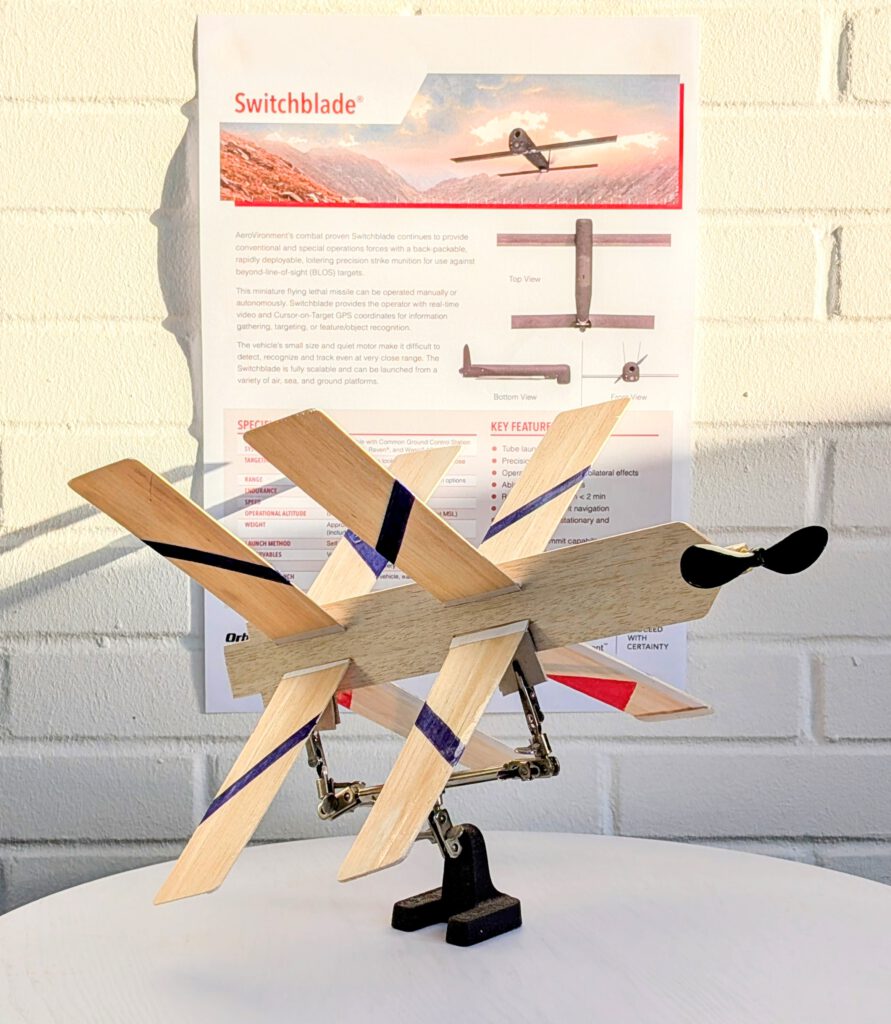
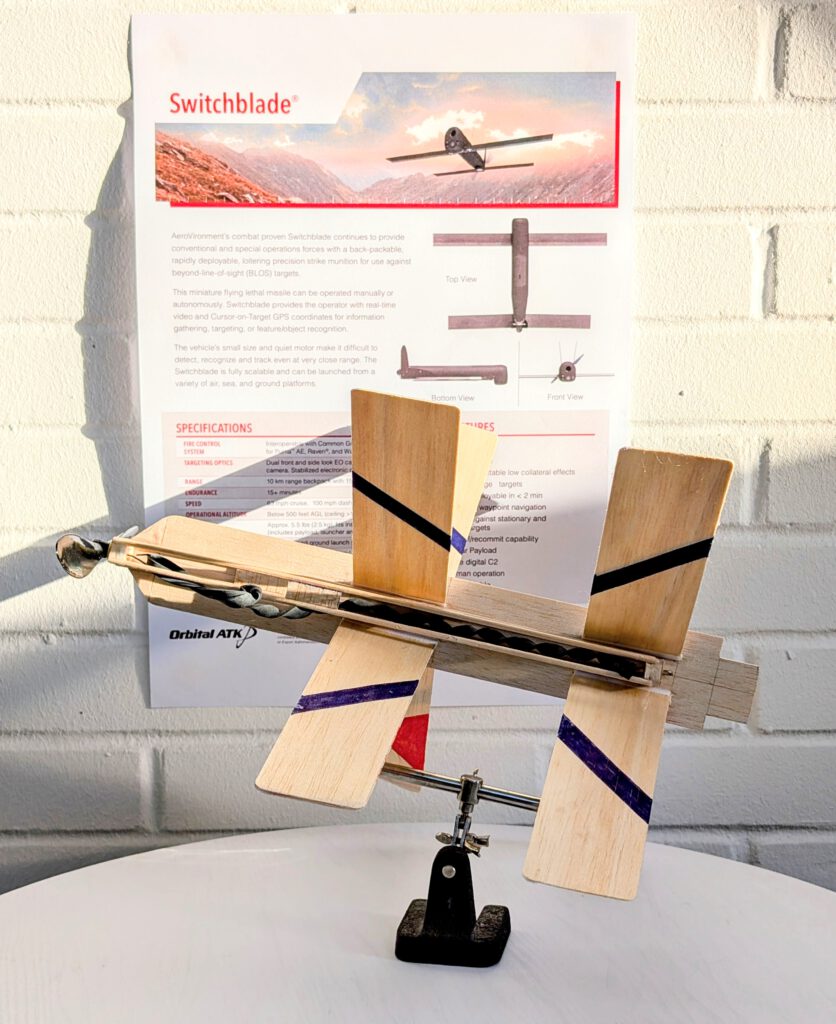
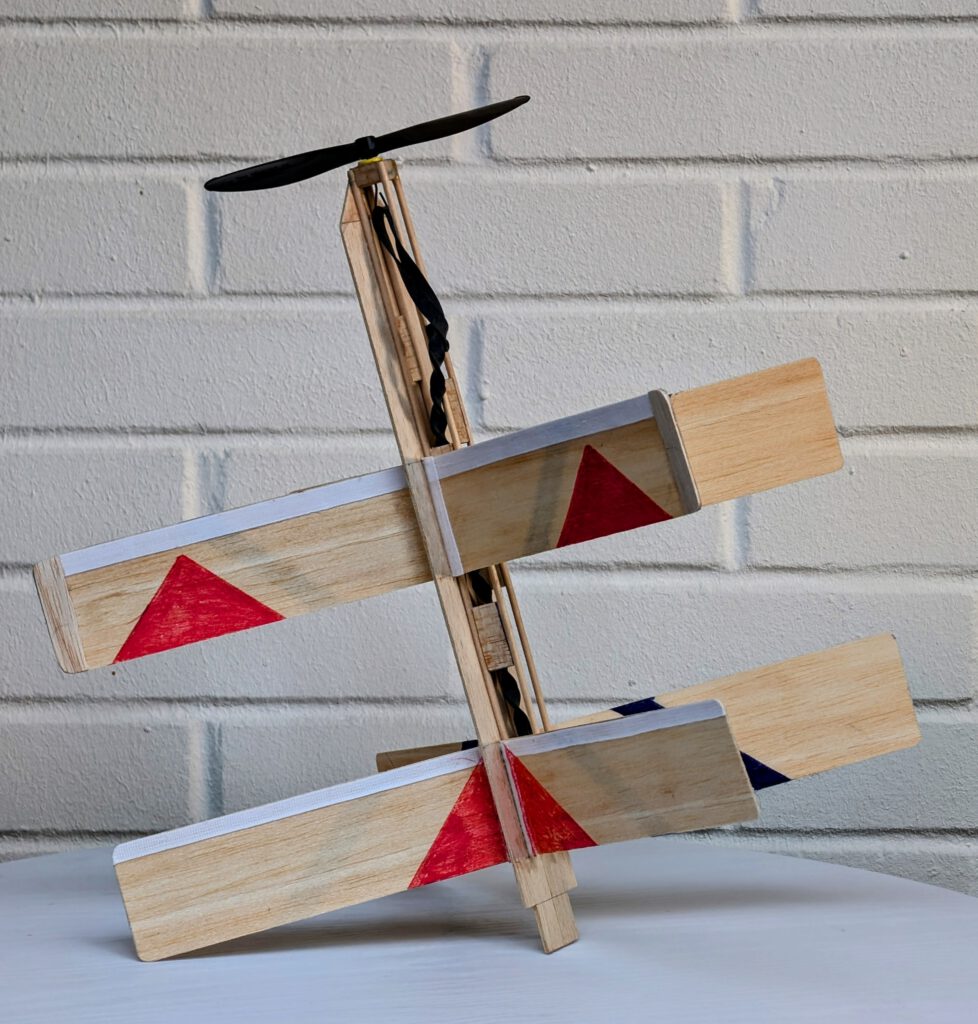
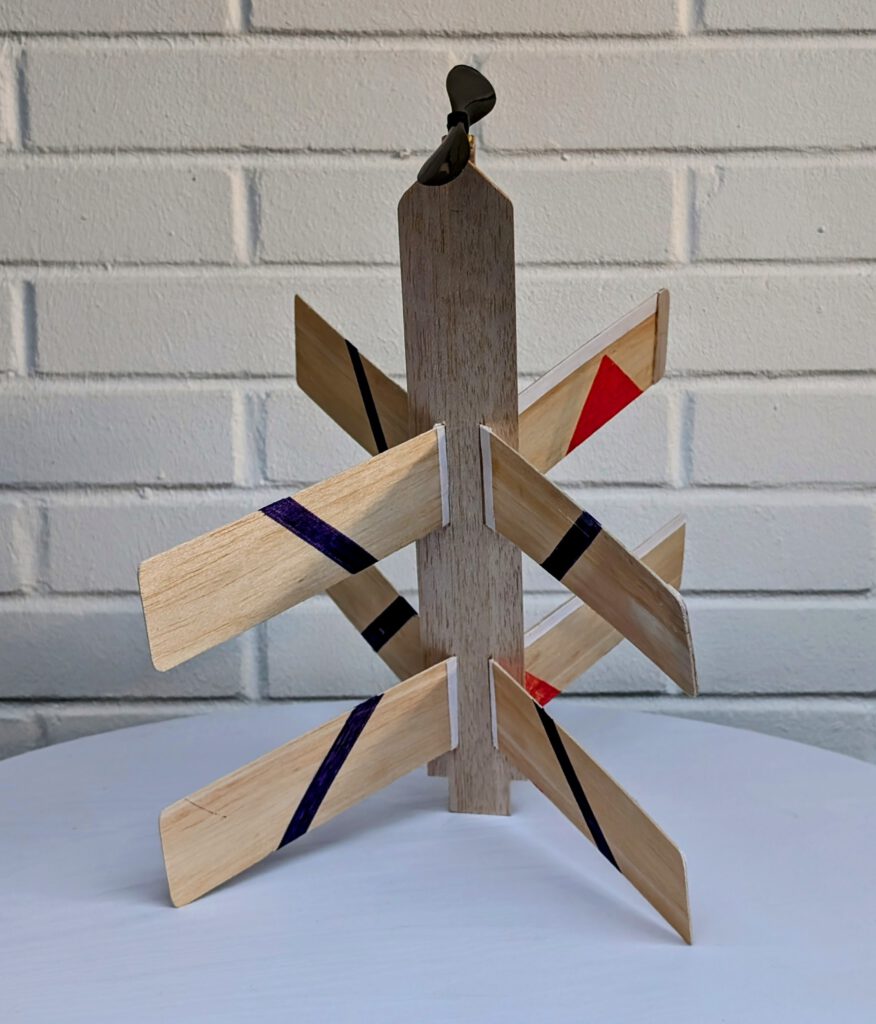
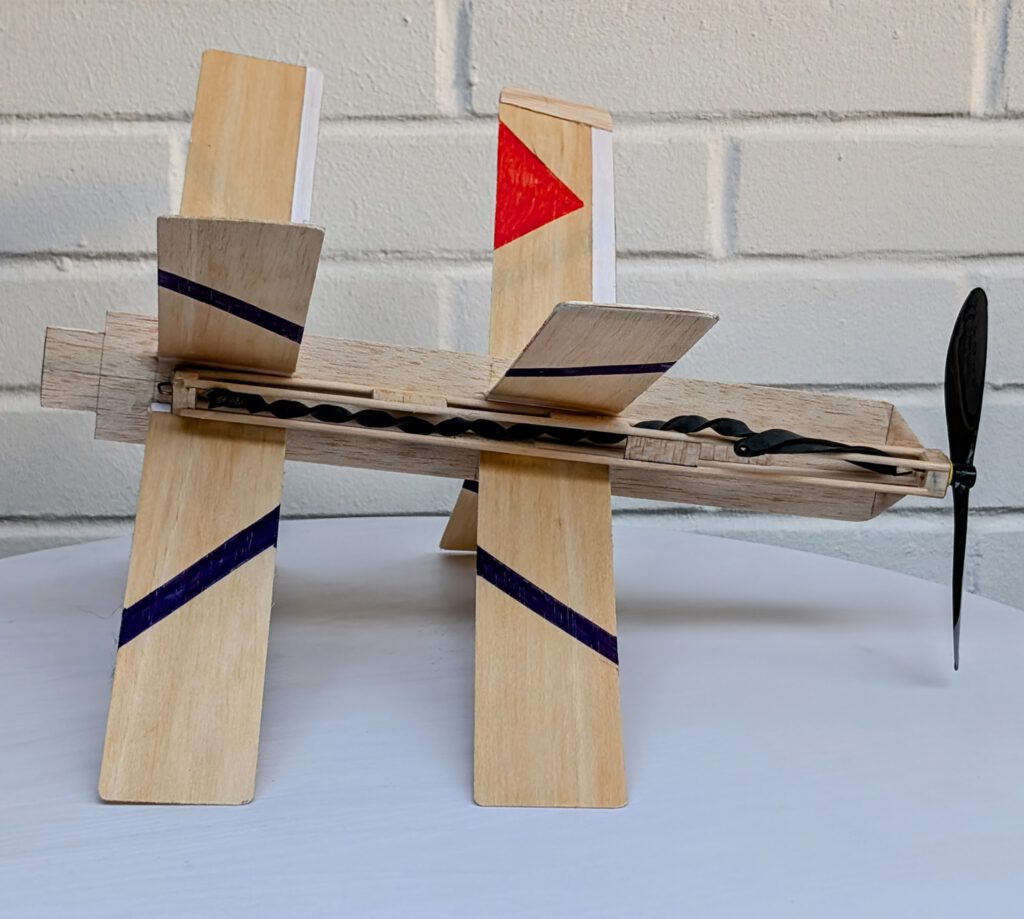
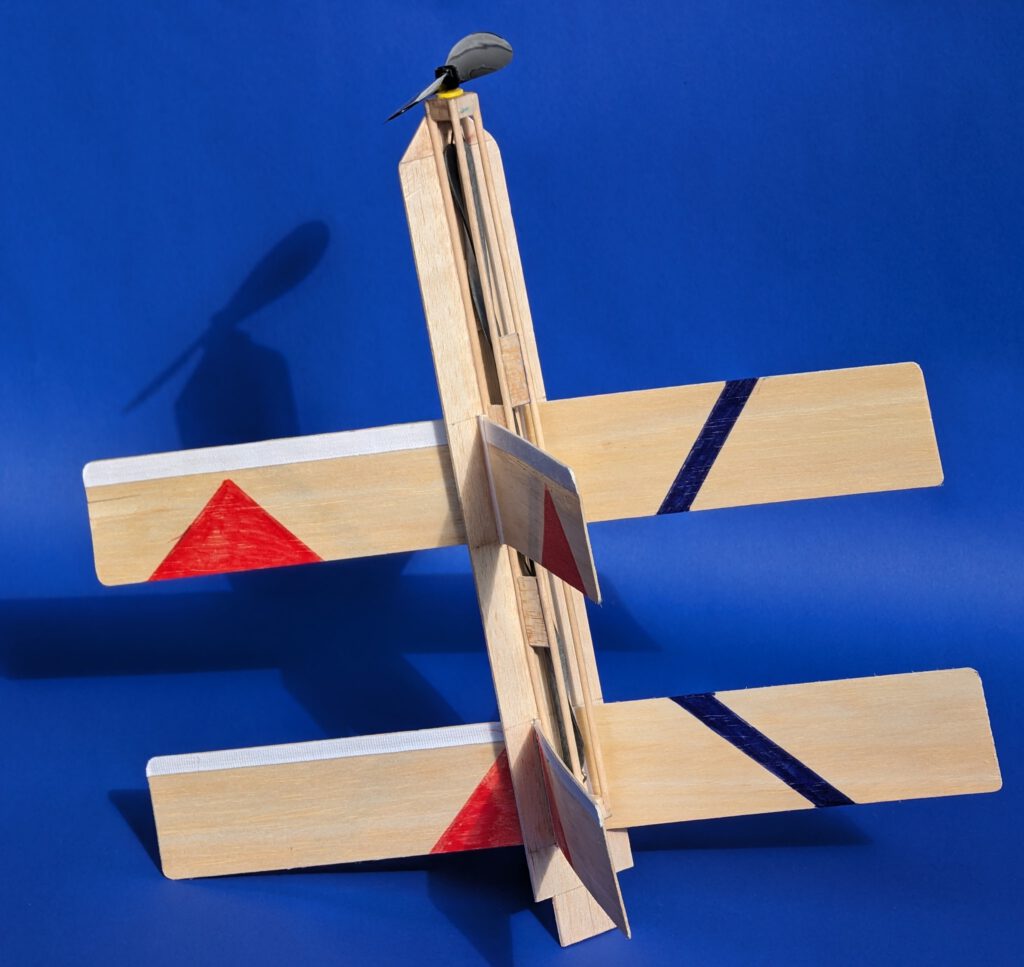
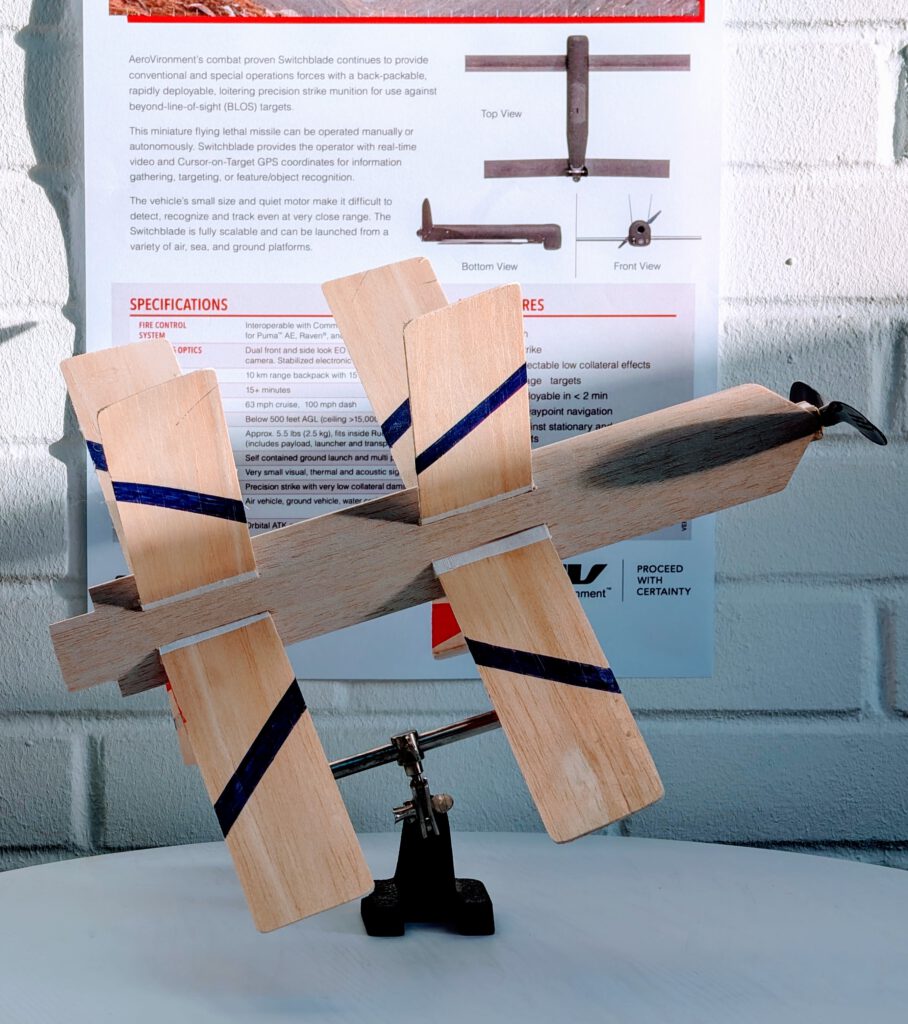
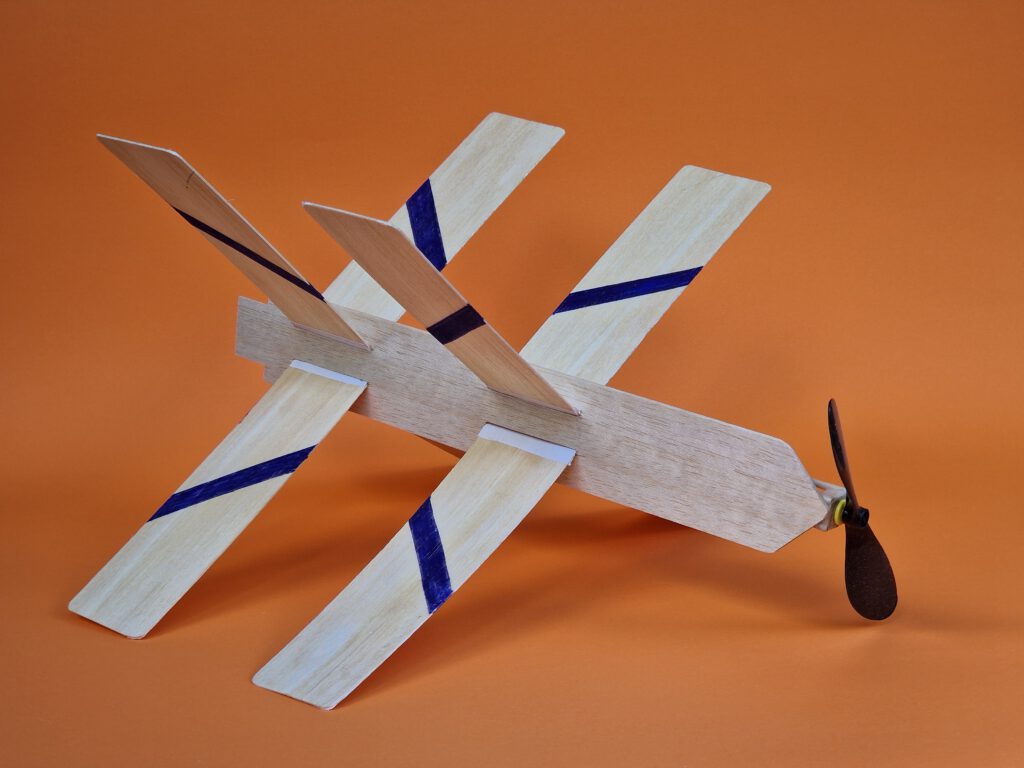
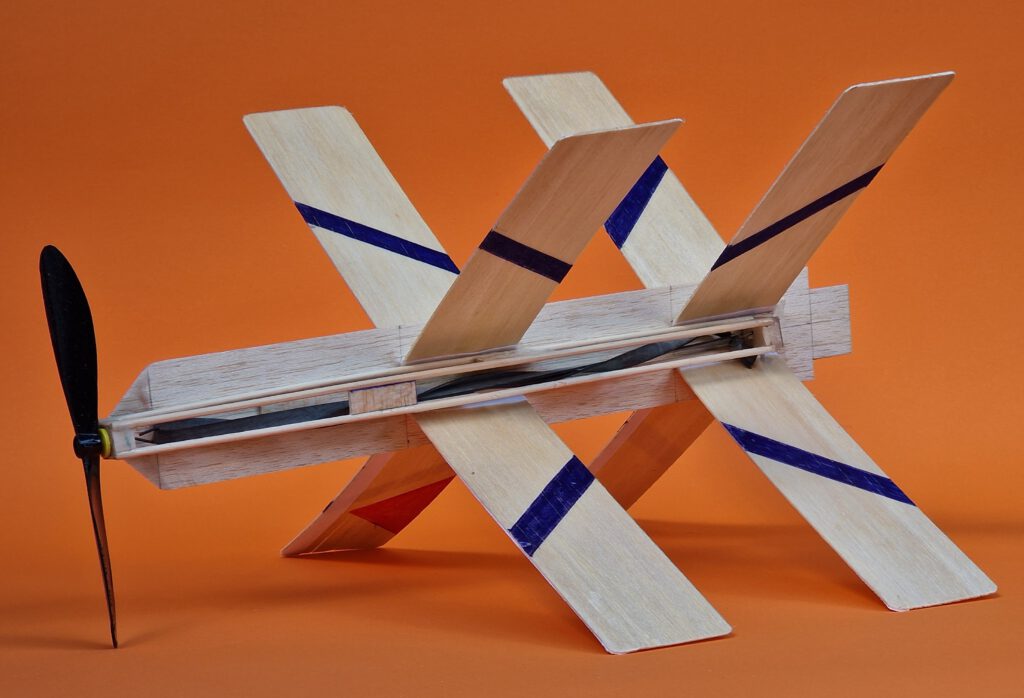
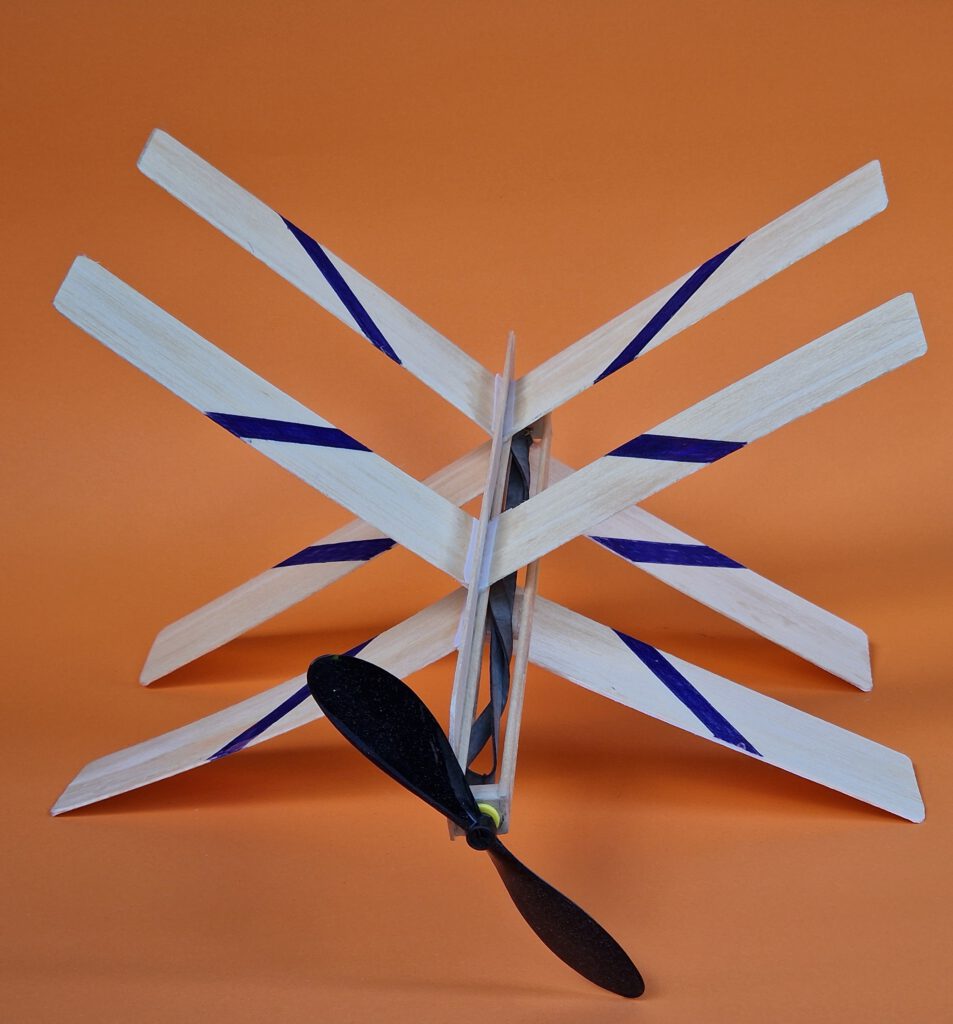
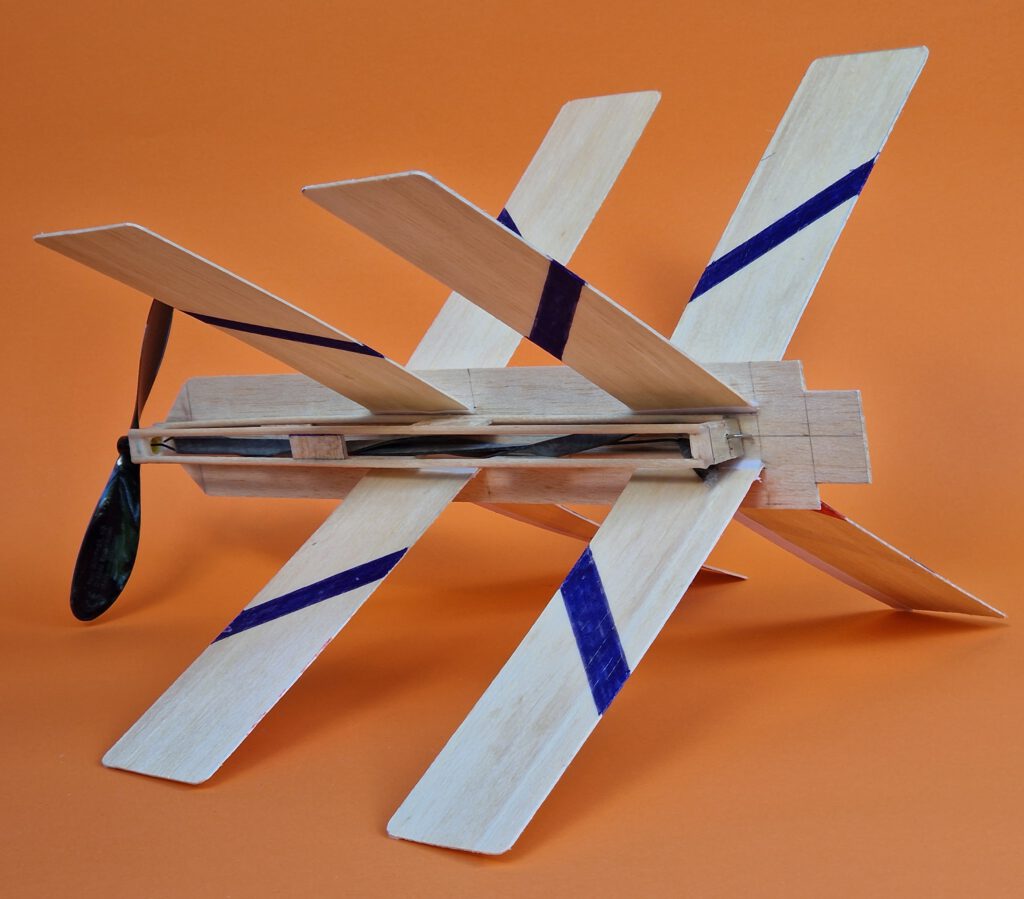
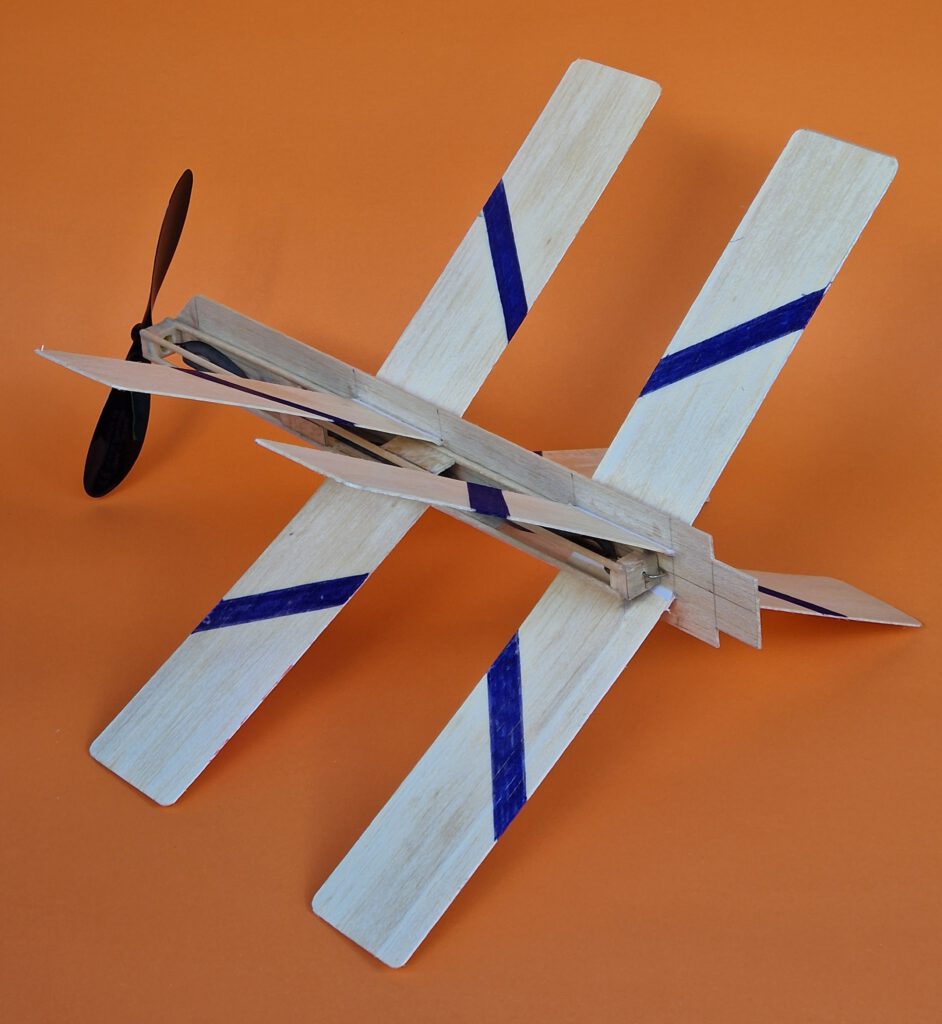
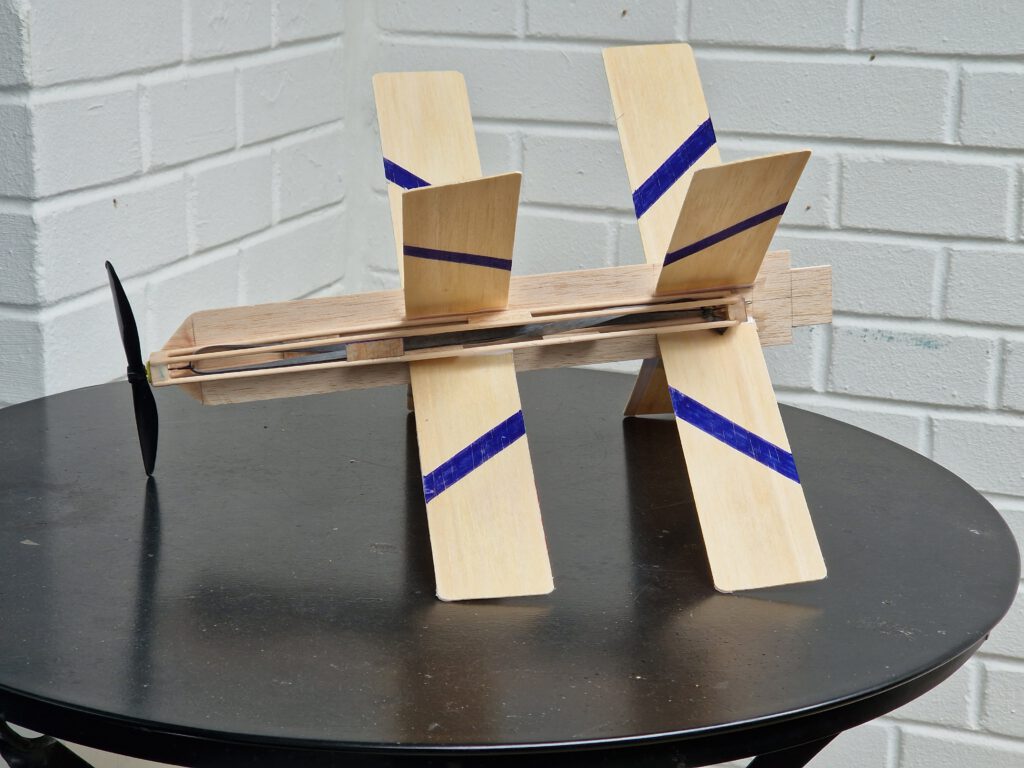
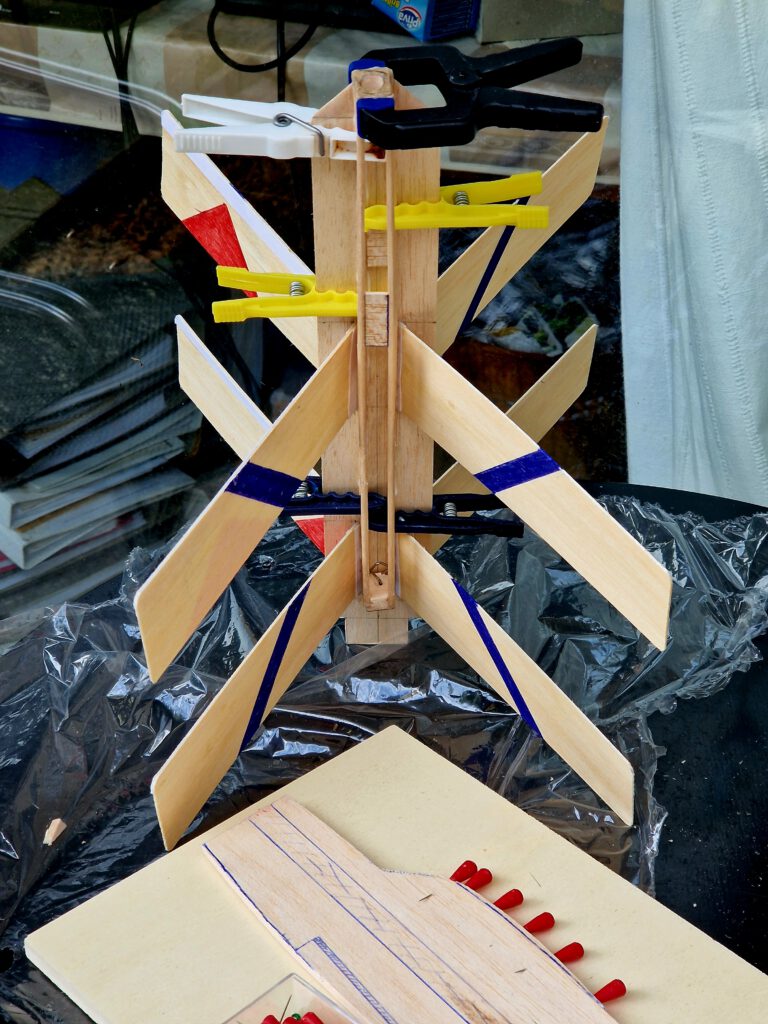
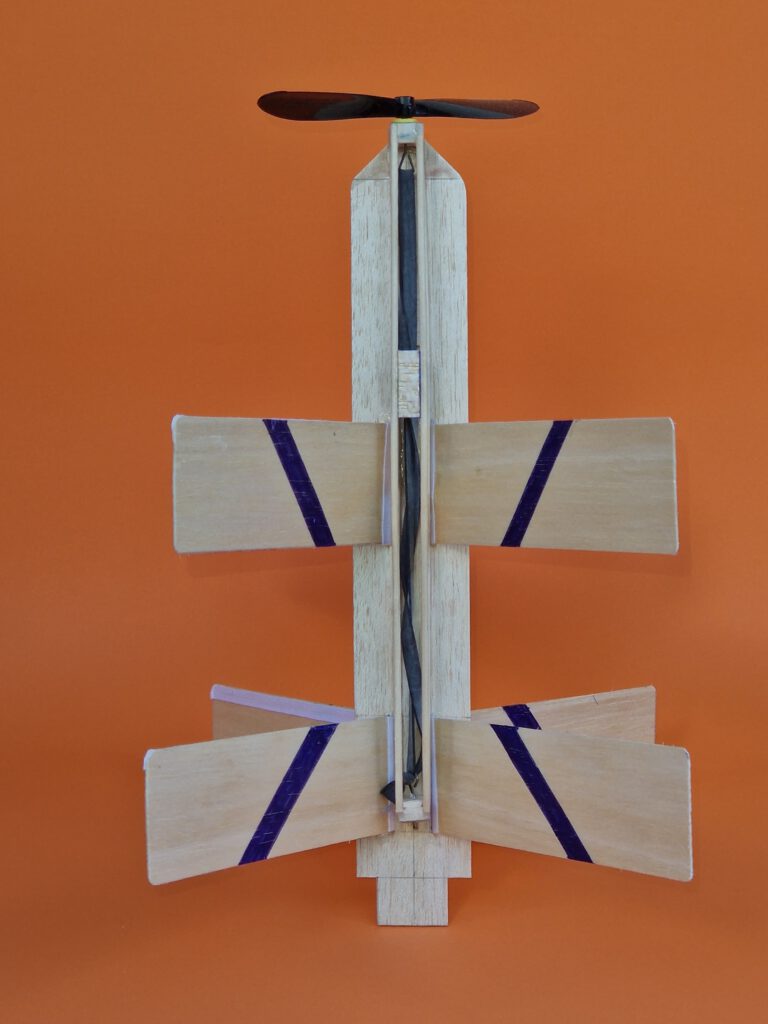
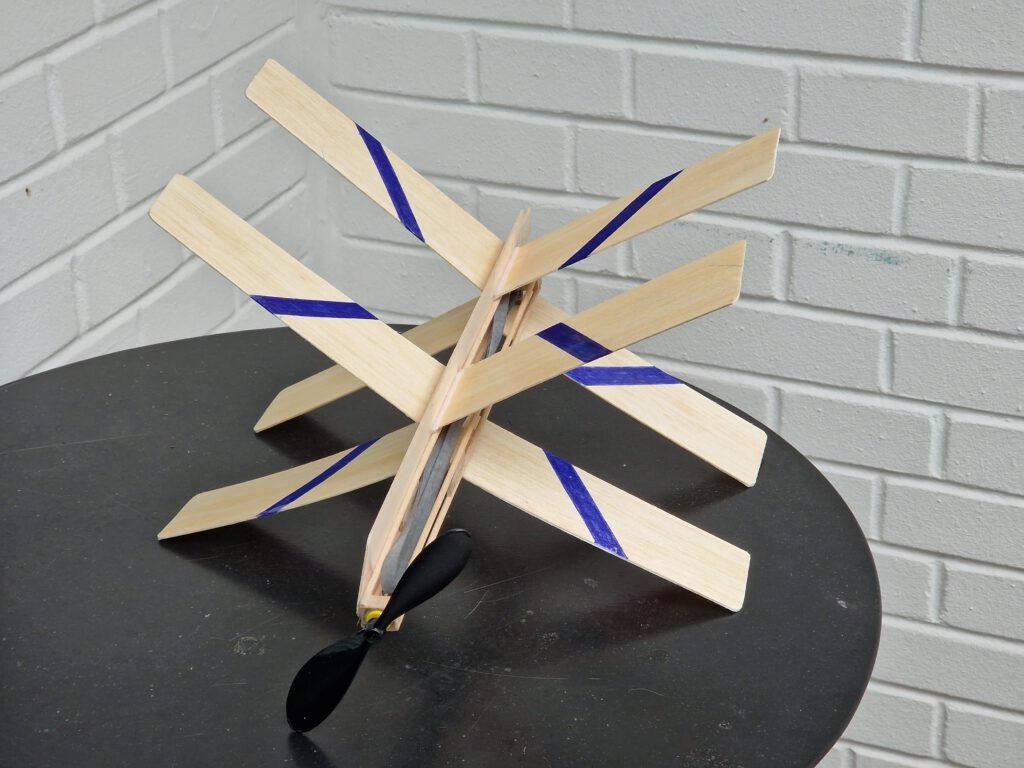
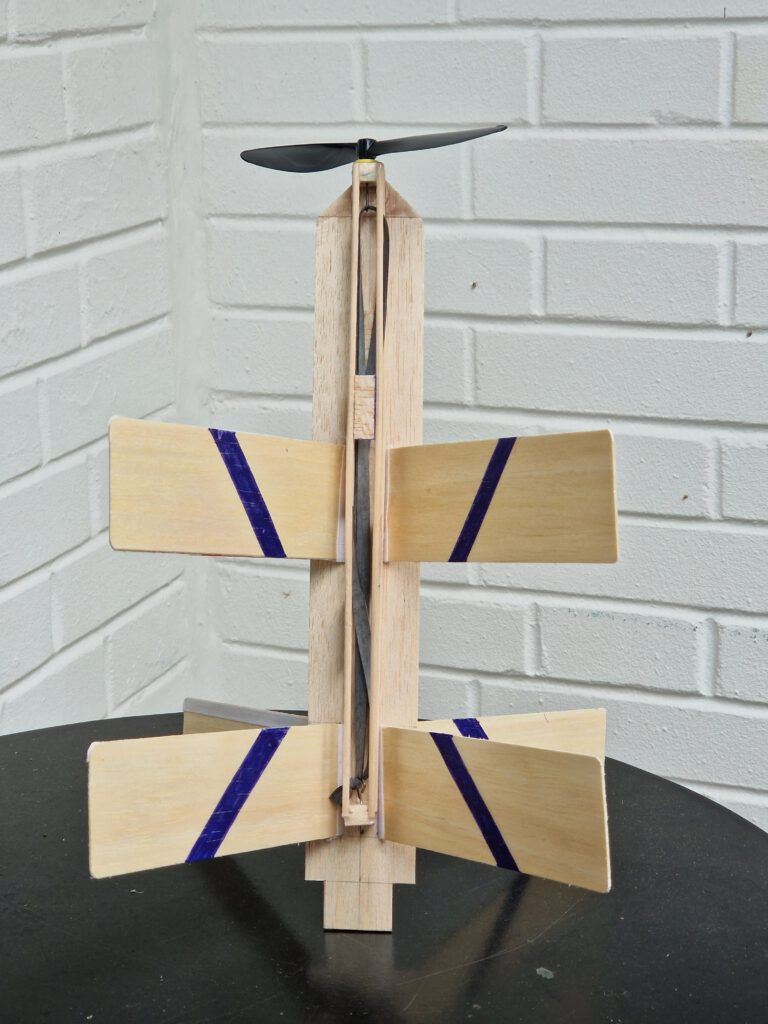
Building the rubber powered sheet balsa Double X’er Eightwinger:
Materials:
Fuselage: B 1.5; wings: B 1; linen/cotton band width 10-12 mm / ½ in; ballast: piece of steel or lead.
Power unit: four barbecue skewer chopsticks diameter 3 mm x 290 mm or equivalent; scratch B 3 and B 5; two pieces of birch ply square 4/5 x 1/32 in (20 x 20 x 0.8 mm); piano-wire hook from 1.2 or 1.5 mm diameter material; one commercial airscrew, plastic, 6 in / 150 mm diameter; one strand ¼ in / 6 mm black rubber.
Assembly:
Cut out balsa parts according to plan. Sand meticulously. Make colouring now, if desired.
Fuselage:
Make four wing slots as shown on plan.
Wings:
Cement four pair of wing halves one half to the other according to plan thereby paying attention to given dihedral. Visual check to obtain best possible symmetry. Use linen/cotton band for reinforcing wing half joints on top and bottom as also on leading edges (undersides) of all four bottom wings.
Additionally bottom wings were reinforced with 10 mm / ½ in B 1 strips at tips. Note: grain direction must here be crosswise.
Power unit:
See my plan # 3000 RPU 20, RPU 30, RPU 40 for building report.
The only difference between this model’s power unit and the RPU 30 is – it is cemented to the sheet fuselage, it’s not detachable.
A lighter solution will be tested soon.
Final assembly:
Put fuselage on a so called „third hand“. Glue wing pairs into fuselage slots. Double check symmetry. When dry cement power unit as shown on plan and photographs at mid-fuselage. Let dry.
Insert rubber and airscrew than start balancing at given CG. Make unpowered test-flights over tall grass only.
Have fun with your Double X’er which is a glider with exceptional flying characteristics. For altering direction of flight warp left or right upper rear wings up or down a little.
Observations:
When storing your Eightwinger don’t have it sit on its wings, as these thin balsa parts tend to bend when loaded with weight; instead put model on its rear end standing upright or hang it at its CG from your hobby-room ceiling.
In the meantime the model was flown many times resulting in a reinforcement of the tips of the bottom wings with small balsa strips on their tips (described above).
Nevertheless it is recommended to fly the Eightwinger Double-Xer over tree-and-bush-free tallgrass terrain.
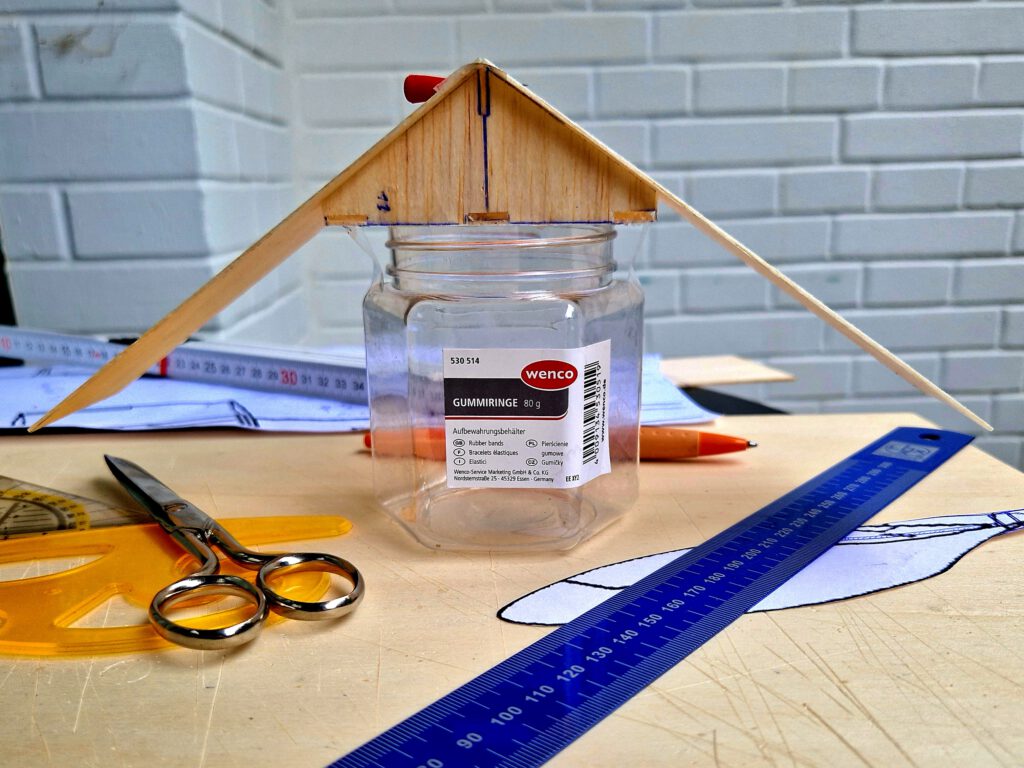
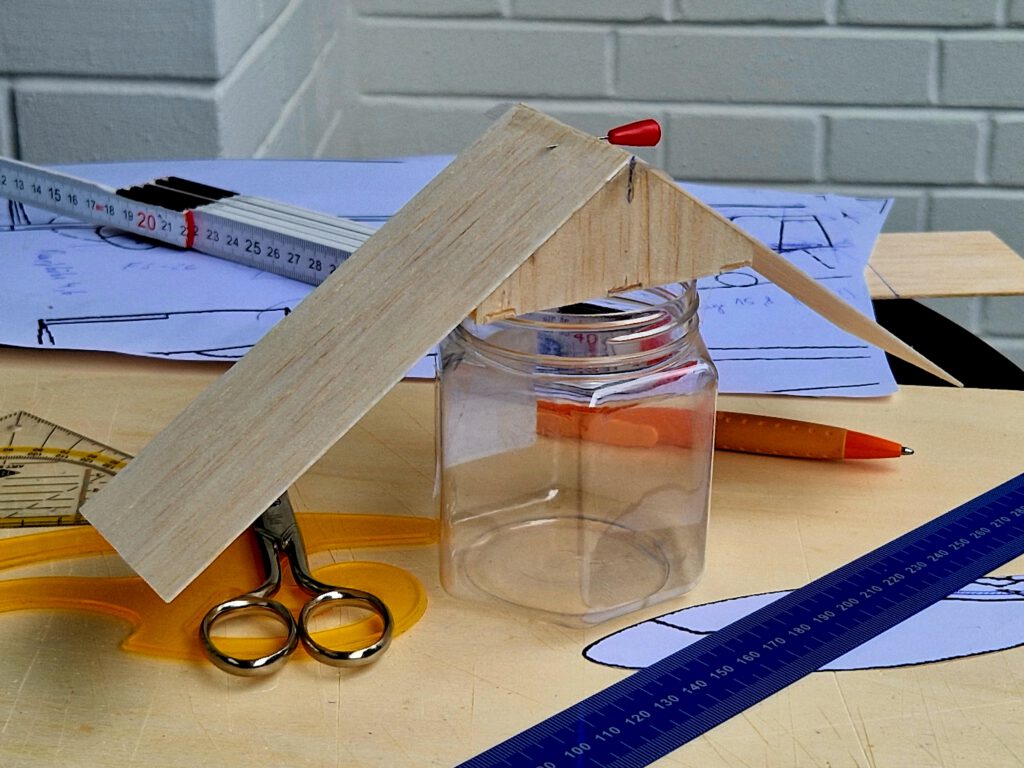
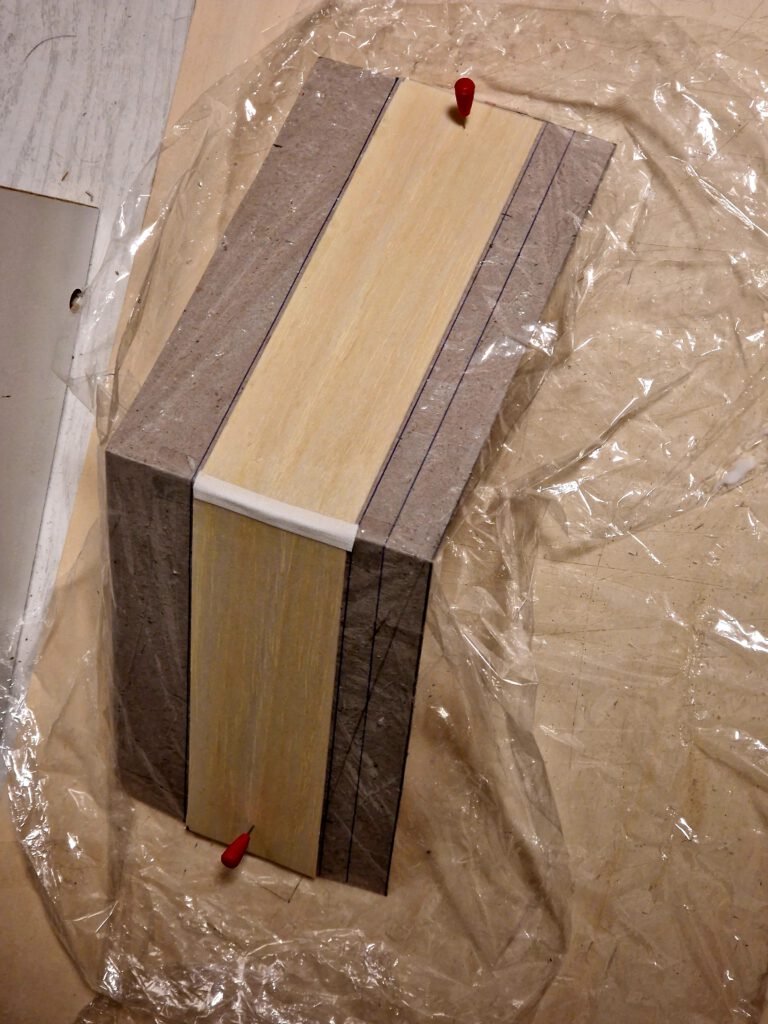
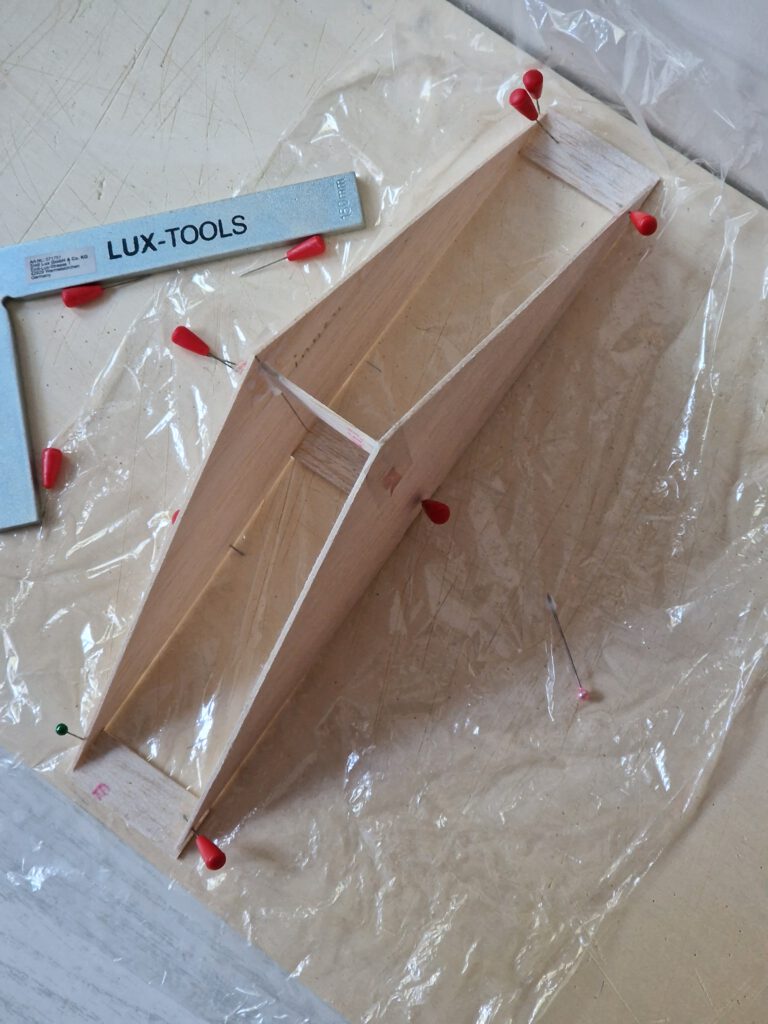
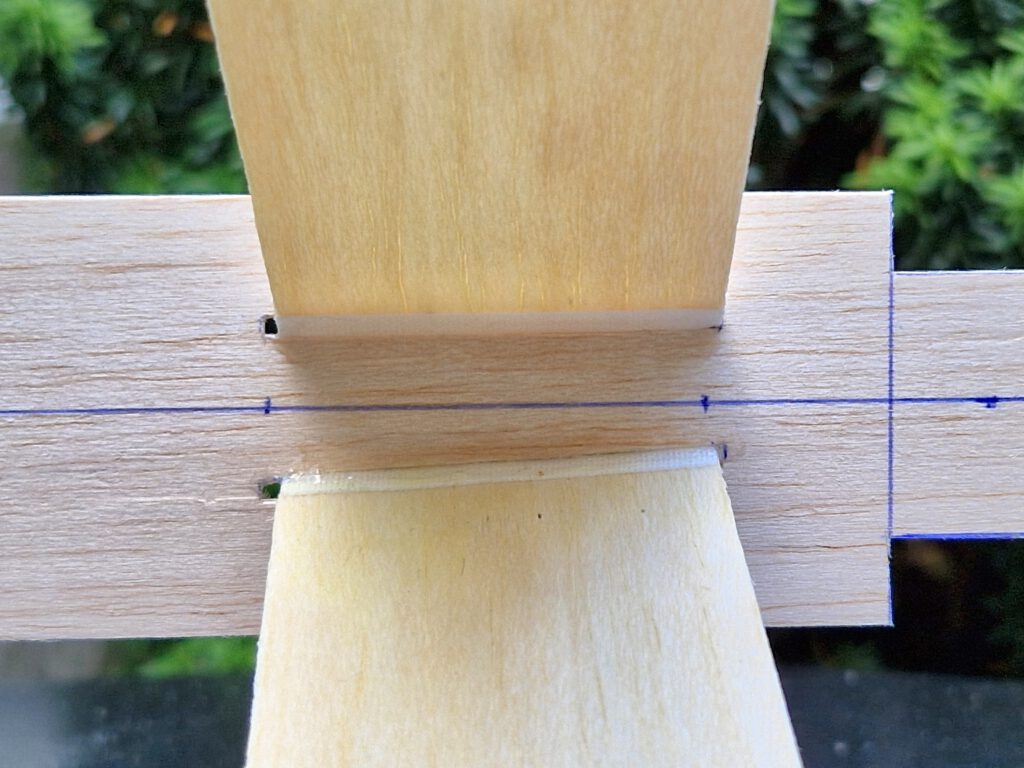
Tenha um bom vôo! (dumogi penerbangan becik!)


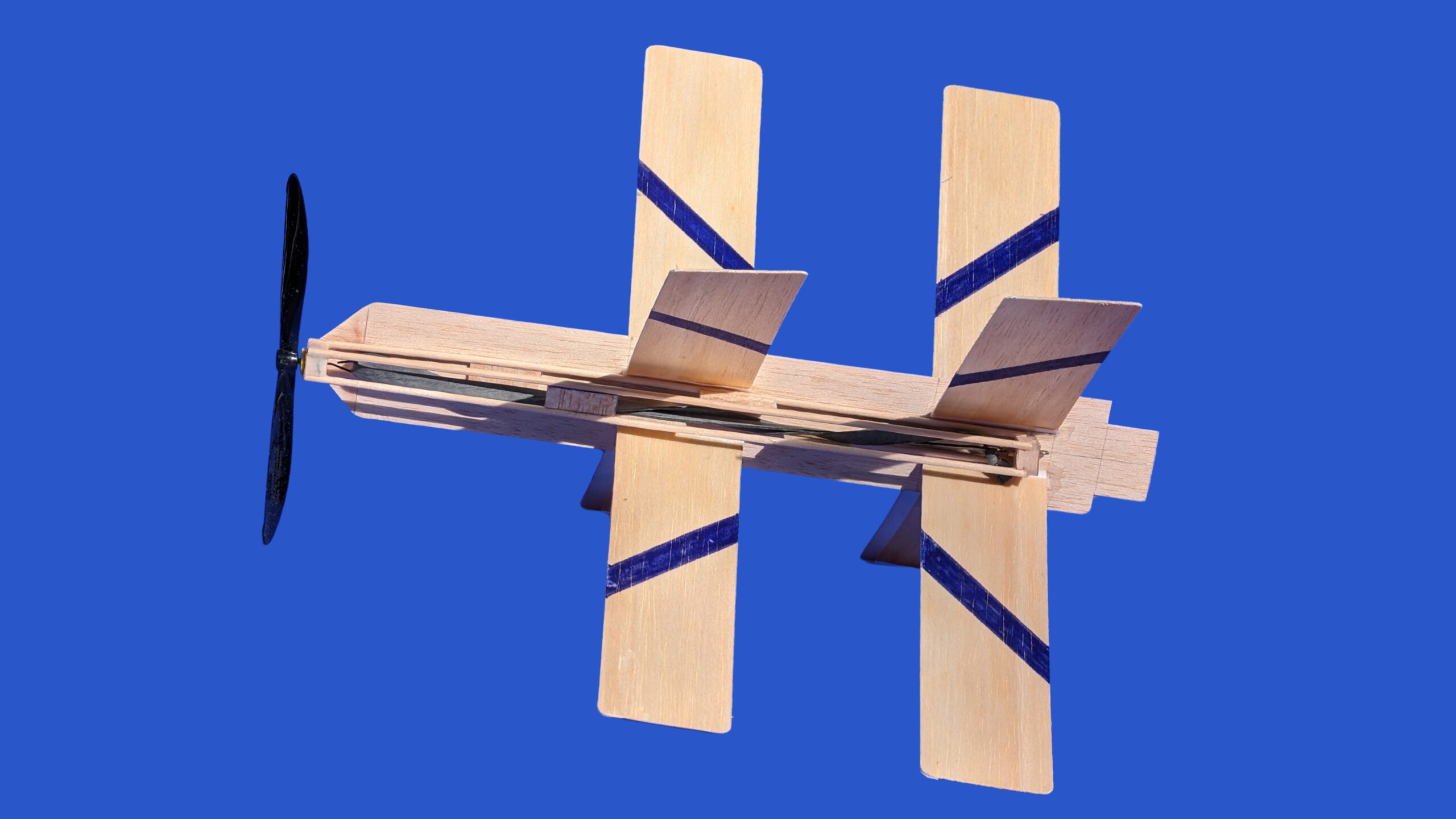
Leave a Reply